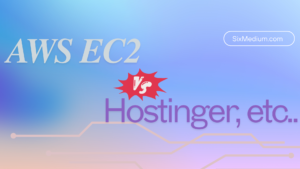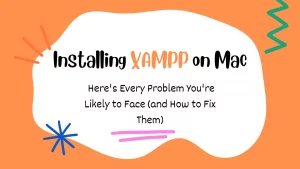Laravel is a powerful PHP framework, but securing your Laravel application is crucial for maintaining performance and protecting user data. Choosing the right hosting provider and implementing security best practices will ensure your app runs efficiently while staying safe from cyber threats. In this guide, we will explore the best hosting practices for Laravel applications.
1. Choose a Reliable Hosting Provider
Selecting the right hosting provider is the first step to securing your Laravel app. Look for a hosting company that offers:
- SSL Certificates: Ensures encrypted communication between your server and users.
- Automated Backups: Protects your data in case of server failures or cyber-attacks.
- DDoS Protection: Prevents malicious traffic from overwhelming your server.
- 24/7 Security Monitoring: Identifies and mitigates potential threats before they cause harm.
2. Use the Latest PHP Version
Laravel relies on PHP, and running an outdated PHP version exposes your app to security vulnerabilities. Ensure your hosting environment supports the latest stable PHP version to receive performance improvements and security patches.
3. Secure Database Connections
Your database is the backbone of your application, and securing it is essential. Follow these best practices:
- Use Strong Passwords: Create complex passwords for database users.
- Enable SSL for Database Connections: Encrypts data transfers between your Laravel app and the database.
- Restrict Database Access: Allow access only from trusted IP addresses.
4. Configure Environment Variables Properly
Laravel uses an .env file to store sensitive configuration data. To secure it:
- Never Expose the .env File: Do not upload it to public repositories.
- Use Proper Permissions: Set restrictive file permissions (e.g.,
chmod 600 .env). - Set Strong Encryption Keys: Laravel’s
APP_KEYshould be a strong, unique key.
5. Enable HTTPS with SSL Certificates
A secure Laravel app must run over HTTPS. Obtain an SSL certificate from a trusted provider or use free options like Let’s Encrypt. Most hosting providers offer easy SSL installation.
6. Use a Web Application Firewall (WAF)
A WAF helps block malicious traffic and prevents common threats like SQL injection and cross-site scripting (XSS). Cloudflare and Sucuri offer robust WAF solutions that can be integrated with Laravel applications.
7. Implement Proper File Permissions
Setting correct file permissions prevents unauthorized access to sensitive files:
storage/andbootstrap/cache/:chmod -R 775- Other Laravel files:
chmod -R 644 - Never allow public write access (
777): This is a major security risk.
8. Regularly Update Laravel and Dependencies
Keeping Laravel, PHP, and your dependencies up to date ensures that you receive security patches. Use Composer to update your Laravel application:
composer update9. Set Up Automated Backups
Unexpected failures can lead to data loss. Use Laravel Backup or your hosting provider’s backup services to schedule regular backups. Store backups securely and avoid keeping them in publicly accessible locations.
10. Monitor and Log Security Events
Laravel provides built-in logging to track errors and security threats. Set up log monitoring using services like LogRocket, Papertrail, or New Relic to stay informed about potential attacks.
Conclusion
Securing your Laravel application starts with choosing the right hosting provider and implementing best security practices. From enabling SSL and configuring file permissions to using firewalls and updating dependencies, every step contributes to a safer application. By following these hosting practices, you can ensure your Laravel app remains fast, secure, and reliable for your users.
By focusing on these security measures, you not only protect your data but also enhance user trust and improve search engine rankings, making your Laravel app more successful in the long run.


